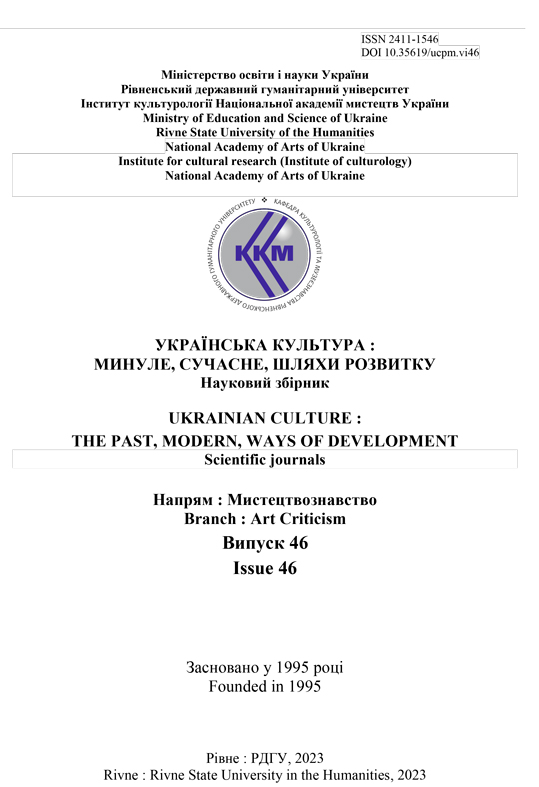DESIGN AS A MECHANISM AND CATALYST FOR SOCIO-CULTURAL TRANSFORMATIONS
DOI:
https://doi.org/10.35619/ucpmk.v46i.712Keywords:
design, culture, business culture, mechanism, design thinking, innovation, human-centered design, ecodesign, biodesign, speculative design.Abstract
The aim of the article is to analyse the peculiarities of the phenomenon of design as a socio-cultural mechanism that allows us to construct the object world, dimensions of human interaction and is a factor of innovation in designing the future.
Research methodology. Eleven major publications on the subject (scientific journals and books) have been reviewed. The obtained information was used to understand the peculiarities of the design and its features in modern culture.
Results. Innovations in the social environment require special methods and approaches to implementation. Such a special strategy can be considered a method of stealth innovation, which involves «imperceptible» changes in the culture of everyday life. Design, being a creature of human society, develops in accordance with the demands of society. Currently, a new type of design practice and design thinking is emerging. By focusing on human needs and experiences, human-centred design drives innovation and social improvement through the creation of artefacts that truly meet the needs of users. HCD encourages designers to solve complex problems by breaking them down into smaller ones. This allows us to pay attention to healthcare, education, etc. By prioritising human needs and experiences, humancentred design often leads to social innovation. This includes developing solutions that address pressing social issues such as poverty, public health and access to education. HCD encourages a shift from traditional problem-solving approaches to more creative, human-centred methods.
Ecodesign and biodesign are emerging, with an emphasis on sustainability and a nature-based approach. Their main emphasis is on the formation of the subject world, the way of thinking or the structure of human (social and professional) relations in such a way as to best correspond to the formation of a future that takes into account the relationship between humans and the environment. The field of speculative design is emerging and gaining importance as a mechanism for analysing future development strategies. All of this is evidence of the multidimensional functioning of design in the context of the modern socio-cultural space.
Novelty. Design is seen as a method and strategy for overcoming the challenges of modern society due to digitalisation and the need for innovative solutions.
The practical significance. The results of the study can be used for further analysis of design features. The study of the peculiarities of design interpretation in contemporary discourse will contribute to a deeper understanding of its potential.




